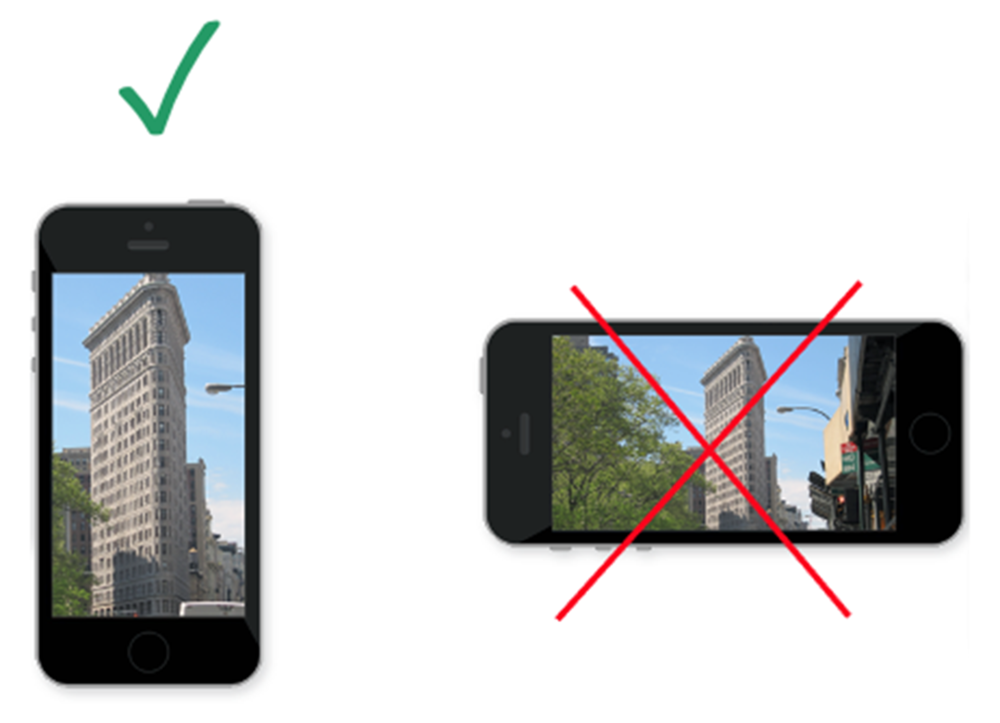Video shooting guide
Below is our guide to how to properly shoot content that fits our platform’s brand standards.
Video parameters
To ensure video content is filmed to the standards needed for the TripBits platform, please follow these parameters when filiming:
Vertical video only
15-20 second clips
3-4 videos for each location (feel free to take more!)
One horizontal photo of the location
Smooth video recording free of erratic / wobbly movements
Avoid zooming
Best practices
-

Focus on the location
Shoot outdoors and on public property – avoid places with admission fees. When shooting don't make a person or any brand the focal point of the video.
-

Plan your shoot
Prep is key – plan what shooting technique(s) might be best for the location. Search social media and check out Google Street View to get ideas.
-

Avoid bad weather
Good weather days with the sun shining are best for showcasing the location. Avoid days with dark or overcast gloomy skies.
Shooting techniques
-
Stationary Shooting Position
Best for if there is movement in the background like flags, water, etc. Stand in one place, no movement of feet or camera.
-
Panning
Best for big vista landscape, or to shoot the facade of a large building / attraction. Pan slowly and smoothly, for 90-180 degrees. Rest your phone on a surface if possible.
-
Walking
Best for showing a pier, highlighting shops, farmers markets, etc. Helps to make the viewer feel like they are walking through it themselves.
-
Time-lapse
Best for people / crowd movements, sunsets, and clouds. Use the built-in time-lapse setting on your phone or GoPro (if you have one). Keep camera resting on surface to prevent movement.
-
Rotation
Best for giving perspective of tall items like buildings, statues, flags, etc. Rotate the camera upwards while shooting.
-
Nighttime
Best when there is some movement of light. Can do with or without time-lapse. Use in a well-lit-building, room lights switching on/off, or a nighttime view across the city.
Video examples
Click below to jump to a specific video type.
STATIONARY SHOOTING | PANNING | WALKING | TIME-LAPSE | ROTATION | NIGHTTIME
Stationary shooting
This only works when there is movement in the video like waves/water, people, flags, cars, lights, etc.
Panning
This works for a big vista landscape, or to shoot the facade of a large building/attraction.
Panning for 90-180 degrees works best. Rest your phone on a surface if possible and plan slowly and smoothly. You can also pan vertically to take in a tall building such as a tower.
Only pan in one direction and a consistent speed.
Walking
This works when you’re walking along a path/trail, down a pier, past shops, browsing a farmers market, walking up to an entrance of a building, etc.
Time-lapse
This works for people/crowd movements, sunsets, clouds. Use the in-camera time-lapse setting on either your phone or a GoPro (if you have one).
You need to keep the camera stationary, and resting on a surface to prevent movement during the time-lapse.
Rotation
Rotate the camera while shooting upwards and panning to give a different perspective of buildings, statues, flags, etc.
Nighttime
This works (with or without time-lapse) when there is some movement of the lights (traffic), a well-lit building, room lights switching on/off, or a nighttime view across the city.
What not to do
Shooting in bad weather
When it’s overcast and dull or rainy, it’s hard to use that video to get travelers excited about the location.
Making a person the center of attention
If we don’t know them and we don’t have a signed model release, we don’t have their permission and can’t use the video.
Shooting on private property
Similar to the person concept above, if it’s private property we don’t have free reign to shoot and use the video in out platform. Stick to filming in public places outside.
Quick and wobbly movements
Fast transitions or wobbly movements make us motion sick - we don’t have our sea legs yet!


